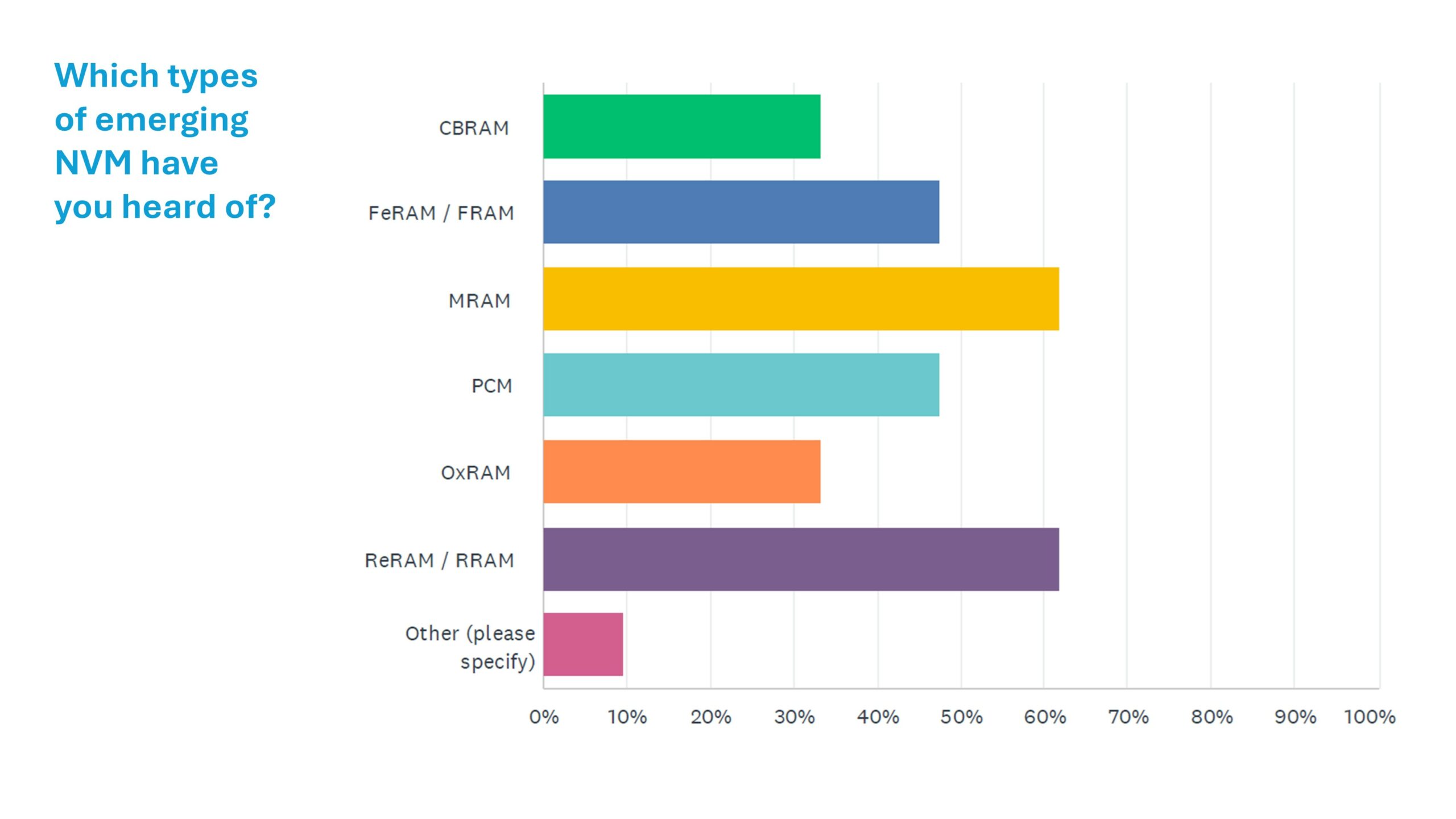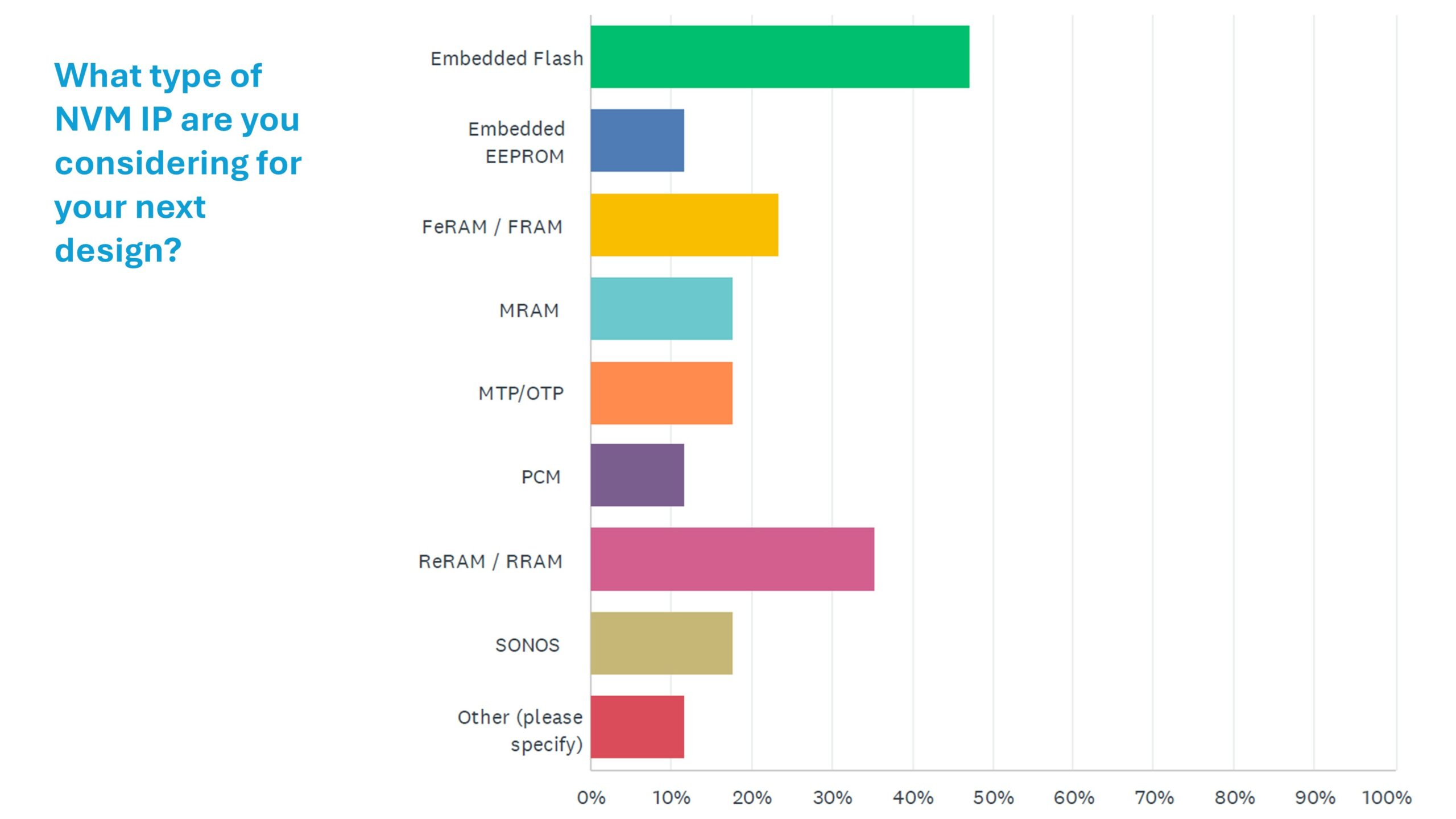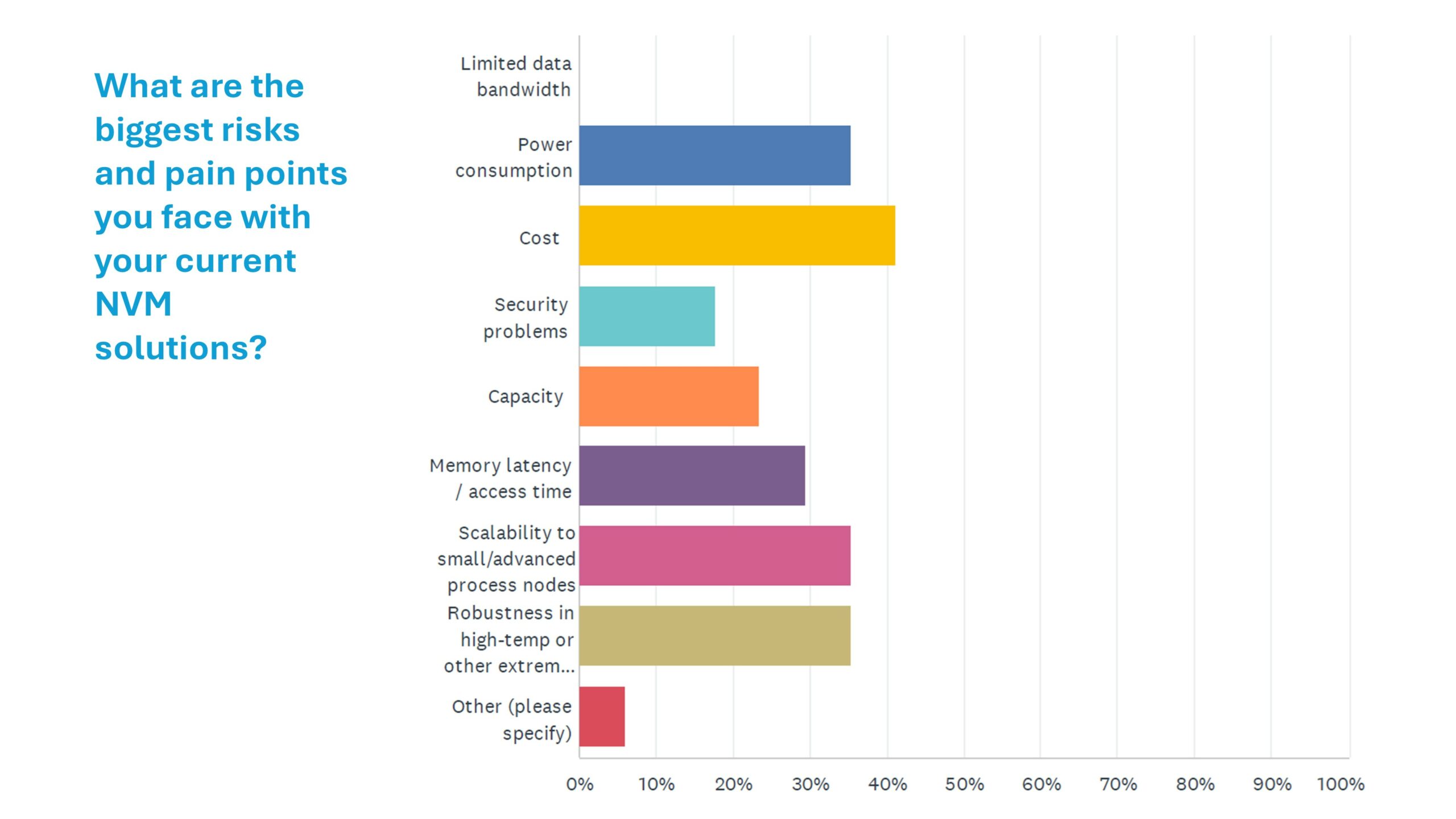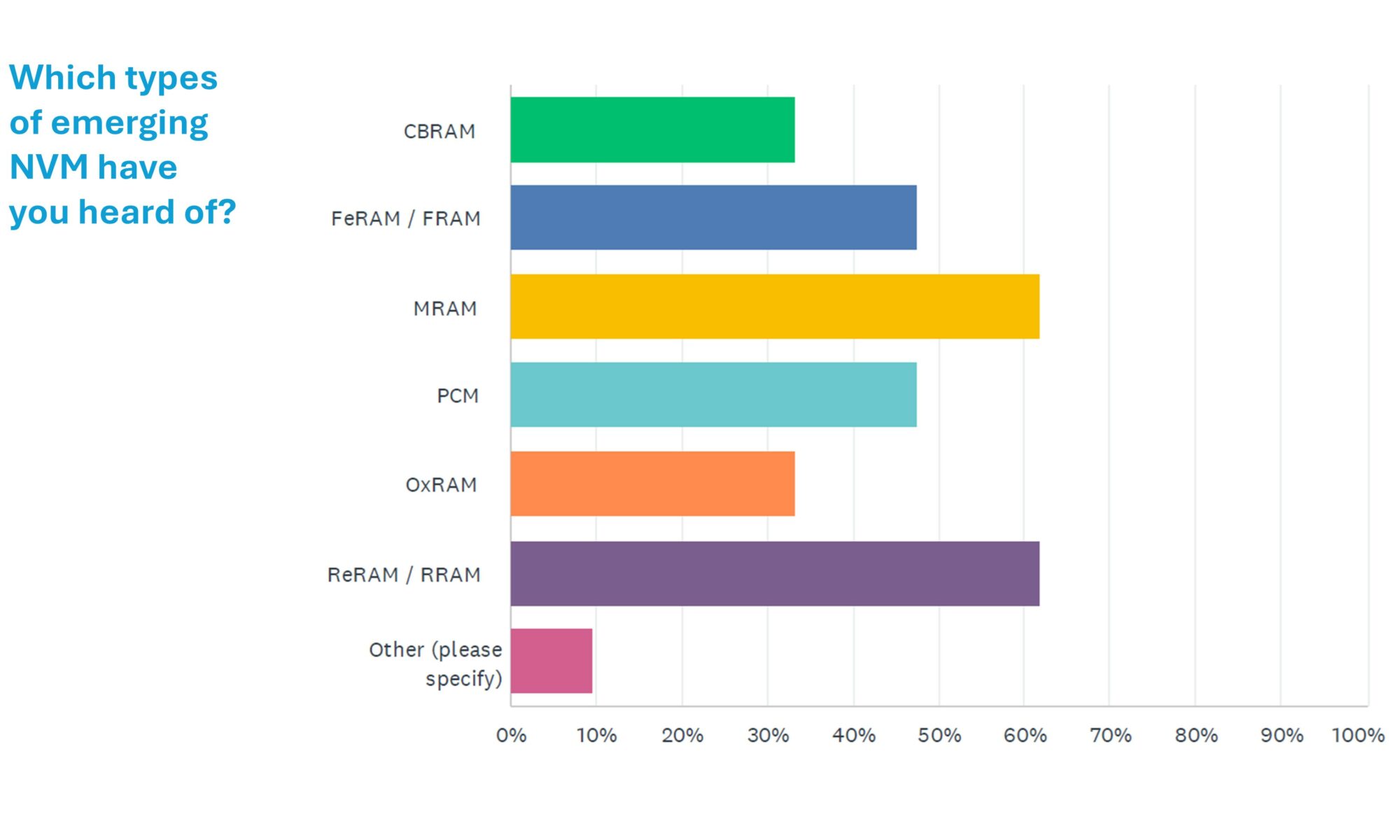A recent survey of more than 120 anonymous semiconductor professionals offers a grounded view of how the industry is evaluating non-volatile memory (NVM) technologies—and where things may be heading next.
The 2024 NVM Survey, run in late 2024 and promoted through various semiconductor-related platforms and portals including SemiWiki, drew responses from engineers, architects, and decision-makers across North America, Europe, and Asia. It focused on how memory IP is being selected, which technologies are under review, and what factors matter most to the people making those calls.

81% of respondents said they’re currently evaluating or have previously used NVM IP. These are teams with real-world design decisions in motion. The respondent base included a mix of semiconductor vendors, IP companies, and system developers—ranging from large global firms to focused design teams. Job titles covered everything from engineers to CTOs.
When asked about emerging NVM types, ReRAM (Resistive RAM) ranked among the most recognized technologies. Over 60% of respondents were familiar with it, placing it in the lead slightly ahead of MRAM. While embedded flash remains dominant, newer options like ReRAM are clearly on the radar as potential alternatives. That recognition doesn’t guarantee adoption. But it does indicate that ReRAM is part of the memory conversation for more companies than in years past.

A notable number of respondents expect to select NVM IP within the next six to 12 months. Some respondents are also evaluating multiple NVM options in parallel, which reflects a shifting landscape. Cost, power, integration complexity, and endurance are all forcing companies to think beyond the status quo.
When asked about the criteria driving their NVM IP selection, respondents cited power efficiency, reliability, integration flexibility, and scalability. Two factors stood out: reliability (42%) and high-temperature performance (37%). Reliability shows up in two columns—technical and commercial—which makes sense. Especially in markets like automotive, industrial, and IoT, that’s not negotiable.
Respondents also shared what’s not working with existing solutions. Top issues included limited endurance, high power consumption, and complex integration workflows. These pain points explain the interest in exploring new NVM types. But most emerging options still have hurdles to clear—scalability, ecosystem maturity, and total cost of ownership being the most cited.

Survey participants are building for a wide range of markets, with a few recurring themes: IoT, where power efficiency and size matter most; automotive, where memory must survive heat and stress; and AI/ML, where fast, reliable access drives performance. These are sectors with sharp constraints—and they’re forcing design teams to re-evaluate long-held assumptions about memory.
The survey also asked how professionals stay informed. The most common answers: technical content from vendors, peer recommendations, and webinars or conference sessions. That may not surprise anyone, but it reinforces a key point: decisions are being made by people actively looking for clarity, not just headlines.
This year’s survey shows a market in transition. Traditional NVM, notably flash, isn’t going anywhere just yet, but it’s no longer the only path forward. Newer technologies—like ReRAM—are being seriously evaluated, something more possible now that major foundries like TSMC are offering ReRAM IP as a main part of their portfolio.
There will be another survey later this year. Stay tuned to see how things progress.
Also Read:
Designing and Simulating Next Generation Data Centers and AI Factories
How Cadence is Building the Physical Infrastructure of the AI Era
Share this post via:






The Quantum Threat: Why Industrial Control Systems Must Be Ready and How PQShield Is Leading the Defense